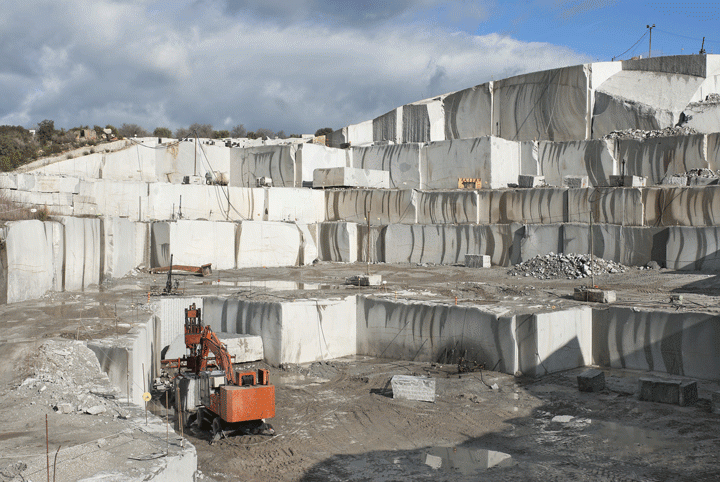Revealing Granite Quarries in South Africa Tradition: A Journey Through Quarries
Revealing Granite Quarries in South Africa Tradition: A Journey Through Quarries
Blog Article
Revealing the Mysteries of Granite Quarrying: Where Stamina and Sophistication Meet
The globe of granite quarrying is a world where the raw toughness of nature merges with human virtuosity to create structures that stand the test of time with an air of sophistication. From the midsts of quarries to the careful sprucing up in workshops, the process of transforming granite right into building marvels is a complicated dancing of practice and technology. As we peer into the midsts of this ancient craft, we begin to uncover the concealed details that shape the really significance of our developed setting.
The Origins of Granite Quarrying
In the annals of building history, the origins of granite quarrying are shrouded in a tapestry of ancient craftsmanship and geological wonders. Dating back to ancient Egypt and Mesopotamia, the extraction of granite from quarries noted the beginning of a trip that would eventually lead to the creation of several of the globe's most iconic frameworks.
Granite quarrying's roots can be mapped to the knowledgeable craftsmens that identified the rock's resilience and visual allure. Via a mix of primitive tools and large determination, these early quarry workers discovered granite blocks that would end up being the building blocks of human beings.
As people progressed, so did the methods of quarrying granite. The Romans, renowned for their engineering prowess, developed advanced approaches for drawing out granite to construct monuments, temples, and roadways that stood the test of time.
The heritage of these old quarrying methods remains to form modern-day architecture, with granite remaining an icon of strength and elegance in building and construction projects around the globe. (granite quarries in south africa)
Devices of the Quarrying Profession
The development of granite quarrying strategies from ancient worlds to modern times highlights the critical function played by the tools of the quarrying profession in shaping the industry's techniques. In ancient times, quarrying devices were fundamental, frequently including chisels, hammers, and wedges made from materials like bronze or iron. These tools needed considerable manpower and time to essence granite obstructs from quarries.

Additionally, the intro of pneumatic devices and high-powered equipment has dramatically reduced the physical labor needed in quarrying operations, improving worker safety and productivity. As the quarrying industry proceeds to innovate, the devices of the profession remain at the forefront of driving progress and forming the future of granite removal.
Removing Blocks of Granite
Making use of precision machinery and progressed methods, the removal of granite obstructs from quarries has actually become a sophisticated process in the my company modern-day quarrying market. The first step includes recognizing the location and dimension of the granite deposit to identify one of the most efficient removal approach. As soon as an ideal site is chosen, the removal procedure starts with the drilling of openings for the positioning of explosives. Regulated blowing up strategies are then employed to disintegrate the granite right into manageable sections.

Polishing and Ending Up Methods
To achieve a remarkable surface on granite blocks, skilled craftsmens use a series of careful sprucing up and finishing methods. After the first extraction and shaping processes, the granite obstructs undertake an extensive sprucing up stage to enhance advice their natural appeal and durability.
Along with sprucing up, ending up strategies are put on further fine-tune the granite's look. These strategies might include flaming, developing, or brushing, each offering special appearances and coatings to suit different aesthetic preferences. Flaming, for instance, includes subjecting the granite surface area to high temperature levels to develop a harsh, distinctive coating, ideal for outside applications where slip-resistance is crucial. Honing, on the other hand, gives a matte coating that is smooth to the touch, excellent for interior countertops and floor covering. By very carefully selecting and applying these polishing and finishing techniques, craftsmens can transform raw granite obstructs into elegant pieces that showcase both toughness and beauty.

Ecological Effect and Sustainability
With the expanding emphasis on environmental consciousness in the industry, granite quarrying techniques are significantly scrutinized for their influence on all-natural resources and long-lasting sustainability. Quarrying for granite can have significant environmental ramifications. The removal process commonly involves the use of hefty machinery, explosives, and huge quantities of water, bring about environment damage, soil erosion, and water pollution. Additionally, the transport of granite from quarries to processing centers generates carbon emissions, further adding to environmental deterioration. granite quarries in south africa.
To alleviate these influences and ensure sustainability in granite quarrying, industry stakeholders are embracing numerous steps. Carrying out sophisticated technologies to minimize power intake and water use, redeeming quarried land for eco-friendly reconstruction, and advertising liable sourcing methods are some methods being utilized. Moreover, accreditations such as the Forest Stewardship Council (FSC) and the Leadership in Energy and Environmental Design (LEED) aid customers determine ecologically friendly granite products.
Final Thought
Finally, granite quarrying is a procedure that calls for specialized tools and techniques to essence blocks of granite and polish them to a high degree of finish. While the ecological impact of quarrying can be significant, initiatives are being made to enhance sustainability methods in the industry. view Generally, granite quarrying is a delicate equilibrium between taking advantage of the strength and style of this natural rock while minimizing its effect on the environment.
Report this page